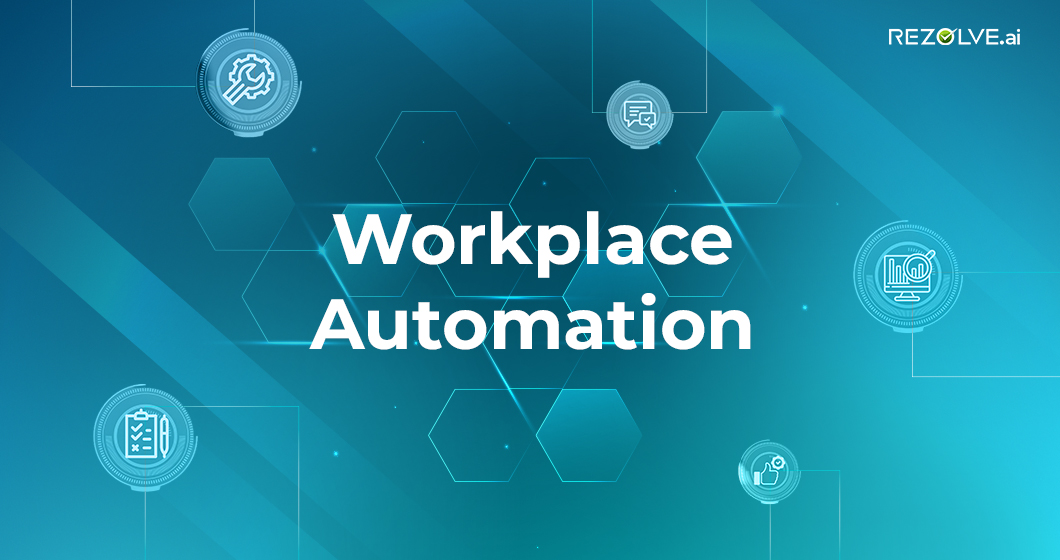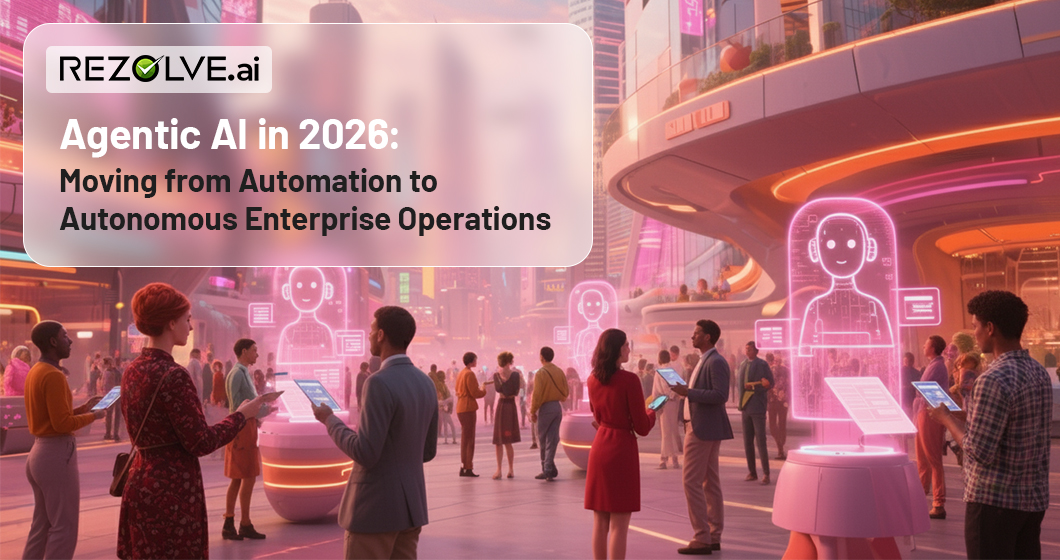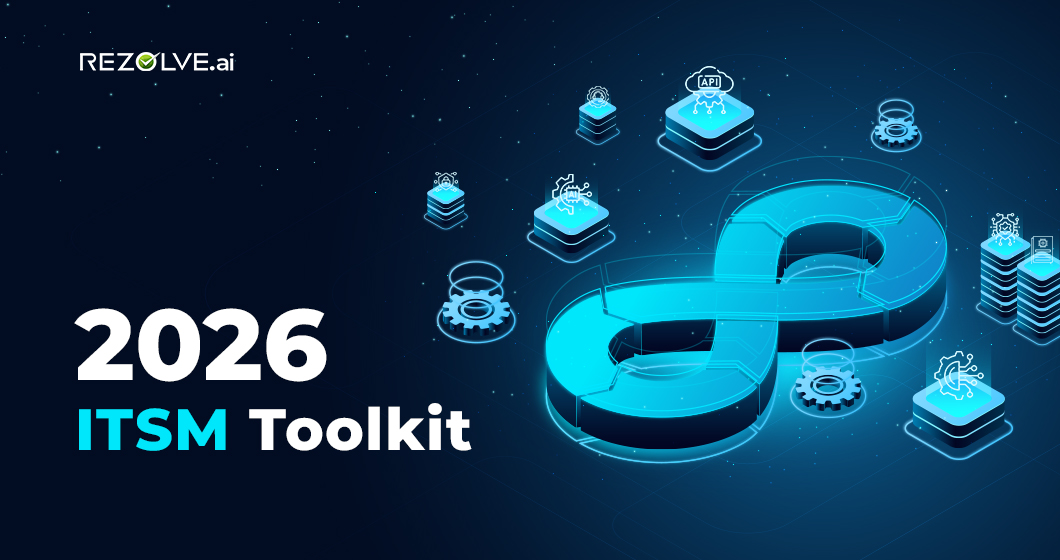Every so often, we encounter a moment in business where technology doesn’t just make processes faster. It forces us to fundamentally rethink how we do things. That moment is already here. And automation is its sharp edge. Let’s not sugarcoat it. Automation, as we’ve known it, has been mostly transactional. Useful, for sure. Timesaving, absolutely! But inspiring? Strategic? Not quite.
Traditional automation lived in the background quietly, somewhat functional. It was the kind of tool you would use to chip away at inefficiency but not overhaul a business model.
Agentic AI is Transforming Workplace Automation
We’re standing at the intersection of autonomy and intelligence. And no, this isn’t a tech trend. It’s a systemic pivot. Automation has moved from scripts to systems that can ‘think’ and ‘act’ autonomously. From forms to agents that understand, and back-office to front-line processes that are handled by AI.
If you're a C-suite leader and still thinking of automation as something IT "implements," you're already behind. Let’s unpack why.
Three Big Evident Workplace Shifts
1. Creating Automation is No Longer a Bottleneck
A few years ago, automation meant lengthy meetings, requirements of gathering, a developer on standby, and three months of waiting. Today? A line of text can start an entire process.
You describe what you want — "Automate the onboarding for remote hires in three departments, accounting for tool provisioning and compliance workflows." The agentic system interprets the requirements accurately. It can draft, propose, and carry on the process all on its own.
The result is not just the speed of automation; it's the scale of it. When ideas translate to output in days instead of quarters, it shows in the overall workplace productivity.
2. Intelligence isn’t Optional Anymore
Traditional automation couldn’t handle uncertainty. If something changed, it broke. It was about following scripted rules, not cognitively understanding the user’s intent. Now, with agentic AI automation, systems don’t wait to be told. They ask the right questions, interpret user’s responses, decide, and act within the given framework of reasonability.
Imagine a compliance workflow that doesn’t just check boxes but flags anomalies based on patterns it’s seen before. Or an IT agent that notices the same error appearing across ten users and auto-initiates a diagnostic script. That’s not vanilla automation. That is AI agents doing the heavy lifting.
3. Accessible Automation within the Flow of Work
The best automation isn’t the one people remember. It’s the one they don’t even notice. Employees shouldn’t have to search for a ‘button’ or a ‘trigger’ to kickoff an automation. Or even ask IT about it. They should interact with it the same way they ask a colleague for help. Agentic AI helps them do get conversational support and trigger the right automations in the background. For instance, with Rezolve.ai, end-users can simply talk to the bot within Microsoft Teams or Slack and get the right support at the right time, in seconds to minutes! Done. No forms. No portals. Just an intelligent layer embedded into an interface that is used every day (so adoption rate is also very high).
What’s Really Powering This Leap?
Agentic AI automation isn’t about shiny dashboards or new workflows. It’s about the convergence of capabilities, which include but are not limited to;
- GenAI & Agentic AI: Not just generating content, but reasoning through problems. These models understand goals and can dynamically change how they pursue them.
- Operator Models: AI agents can now interact with interfaces just like humans by clicking, typing, navigating, and taking actions on a visual interface. It was once tediously achieved through Robotic Process Automation (RPA) via PowerShell scripts (that broke with a minor UI change). Now, models like OpenAI Operator can read and interact with digital screens like we do, flawlessly.
- Multimodal Inputs: It can be a screenshot, a spoken phrase, or a hint of intent to trigger the automated resolution. E.g., if a user sends a photo of a blue screen, the system recognizes it, logs it, and starts a resolution path.
- Auto-generated APIs: Documentation isn’t just for humans anymore. GenAI can read Postman collections, generate connectors, and build the plumbing for automation in real-time.
- MCP Protocols: Bots are no longer confined to their silos. They talk to each other. Across tools. Across organizations. The human bottleneck? Getting smaller by the day.
Put all this together, and what you get is something we’ve never really had before: an operating layer for enterprise work that is living, learning, and contextually aware.
So, What Should Leadership Actually Do?
First: let’s start by shifting our questions.
Don’t ask "What can we automate?" Instead, ask;
- What’s holding back the flow?
- Where does decision latency live?
- What knowledge isn’t scaling?
- Where are people stuck repeating what machines could learn to do?
Second: zoom out.
Automation isn’t a product or a project. It’s a philosophy. An architectural choice, and increasingly a cultural one.
Third: prototype faster.
If it takes more than a sprint to test an idea, your automation stack is too heavy. Your team needs to play to learn how intelligent agents behave, fail, and recover. Modern employee support solutions like Rezolve.ai enable creation of custom agentic AI automations via its Creator Studio. Support teams also get a safe sandbox environment to test critical processes before full scale deployment.
Emergence of Autonomous Enterprise
Enterprises can be broken down into processes and workflows where knowledge workers act as the agents who guide them. But when humans are the only dependable agents in any system, there are limits to energy, precision, and availability of the system. Agentic AI systems essentially flip this paradigm in favor of the enterprise.
Consider the following scenarios;
- ITSM Automation – IT ticketing is a mission-critical process for employee support. L1 queries and tickets make up for the bulk of support queries for most enterprises. While IT agents have traditionally handled these, L1 has typically been inefficient (based on resolution times and repetitive queries). With agentic AI systems (like Rezolve.ai), L1 activities can be eliminated completely. It can autonomously handle up to 70% of repetitive queries, and loop in human agents if required.
- HR Automation – Human capital is driven by HR department for enterprises. There are countless processes involved in recruitment, payroll, case management, policies, and employee training. While this has been traditionally handled by HR teams, agentic AI eases this burden almost fully. For e.g., with Rezolve.ai, processes for onboarding, attendance, knowledge support, policy document access, and even case management can be automated right within MS Teams and Slack.
There are many more enterprise processes that are being actively being made ‘autonomous’ with agentic AI. This includes but is not limited to accounting, marketing, strategic decisions, and even compliance.
Competitive Advantage is Being Redefined
With agentic AI, tomorrow’s winners won’t be the ones with the most automation. They’ll be the ones who;
- Automate with intent
- Integrate intelligence at the edge
- Treat automation as capability-building, not task-replacement
- Train people to think like orchestrators, not operators
They’ll build environments where automation is part of the workflow DNA. Where the tech doesn’t just accelerate outcomes but evolves them. And most importantly, where leadership doesn’t just endorse the change but models it.
Final Thought
The temptation right now is to treat agentic automation like the last wave of automation: define, scope, implement. But this is not it. This is not RPA with new branding.
This is a generational pivot in how we approach complexity, scale, and work itself.
If you’re in the boardroom and still waiting for a case study to justify action, here’s a thought: the organizations writing those case studies are already six months ahead. The best time to embrace intelligent automation was yesterday.
The second-best time?
Right now.
See how Rezolve.ai can bring agentic AI automation at speed and scale for your enterprise - [View Demo]





.webp)




.jpg)

.png)








.png)